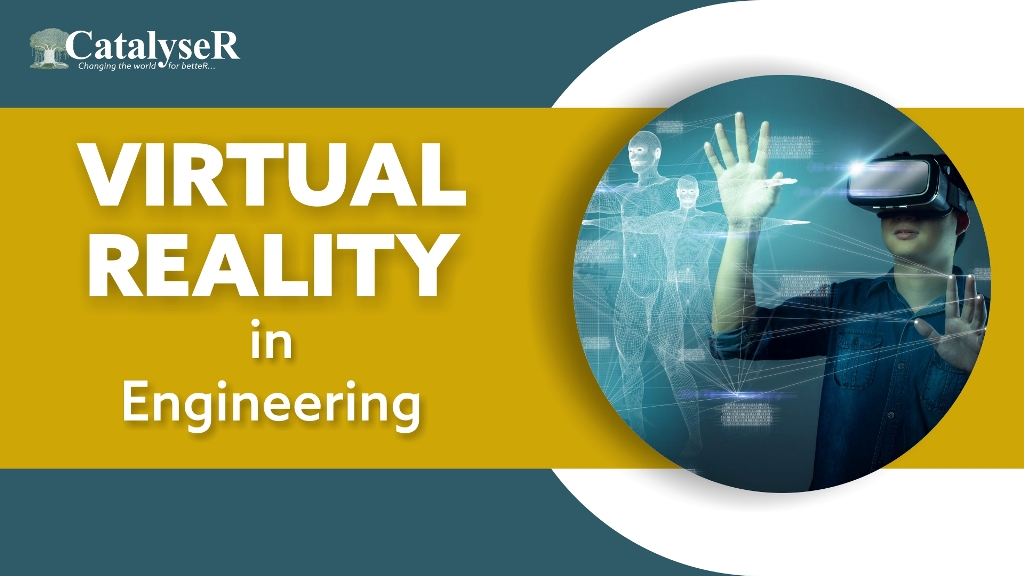
Virtual Reality in Engineering: Here is Everything You Need to Know
In the sector of education especially engineering, the development of necessary cognitive, socio-economic, and technical skills has limited availability of hands-on training and limited access to appropriate content and learning scenarios.
It is still a problem for students and teachers.
Prior to the outbreak of COVID, it was a chore for the Faculty of Engineering to provide students with hands-on book experiences that required practical skills, especially programs that required the use of laboratories.
As a result, educators have relied on virtual reality simulations to develop learning experiences.
How can engineering students train on a virtual platform?
All the new innovations and technologies launched face challenges ranging from Steve Jobs, the launcher of personal computers, to Apple, the launcher of wireless earphones. However, students embrace technology as soon as they realize the importance of technology.
Virtual reality was able to break into all areas.
Engineering is a versatile field that requires students to keep up with the latest technologies, from virtual reality to artificial intelligence. This not only forms an engineering curriculum but also makes learning-intensive, effective and thorough ... !!!
However, there is a misconception that virtual reality is a distraction for students. Many believe that it does not fit into the field of education.
Parents compare VR in video games without understanding the potential benefits this simulation brings to their students.
What Benefits Does Virtual Reality Offer in Engineering?
Before looking at some of the benefits of virtual reality in engineering, let's define what VR is. Realistically create a fully digital and man-made environment, a 360-degree immersive user experience.
In a VR environment, students can connect with what looks like they are actually there.
The use of immersive training in the engineering department has promising outcomes in educational outcomes, enabling meaningful and interactive learning and increasing experience.
In addition, it has the ability to stimulate student creativity and stimulate their imagination. Unleash new academic interests and encourage understanding. Most importantly, it has the ability to interact with a universal society across different values and cultures.
According to a recent study, VR is useful for students who have learned in a simulated environment with memory retention and recall.
Some of the virtual reality applications in engineering:
We have long sought to escape the basics of computers, mice, or keyboards. VR provides a new and more intuitive way to interact between humans and machines. Here's a brief glossary of VR and how to use it.
Computer-Aided Design (CAD) and Computer-Aided Engineering (CAE)
It's engineering that involves designing, envisioning, testing, creating, and maintaining things before they're actually built.
This helps with visual collaboration and reduces the resources and time spent on product development. Autodesk, Augment, and Solidworks are some of the options designed for CAD to help students understand real-time implementations. Stereoscopic video:
A monoscopic or stereoscopic video is a video in which the images are focused on both eyes, and they are linked together to give the illusion of being inside a sphere.
You can drag and drop to navigate or use the motion sensor to view it on another device. VR training in the field of engineering education has increased dramatically in the last few years.
Virtual simulation can provide engineers with hands-on training opportunities without stress, risk, or the opportunity to practice repeatedly. We can provide an inaccessible learning environment for engineering students.
These features can accelerate a student's learning theory in a time- and space-free simulation environment. VR Lab:
The need for laboratories plays an important role in science education because of its many advantages. The VR Lab offers many opportunities for engineering students.
These allow you to perform experiments and perform complex studies that help you break away from traditional constraints.
These laboratories eliminate equipment costs and stop research due to the time spent between processes.
VR Labs allow engineering students to accelerate simulations and see results without being tied to time. VR is a new form of communication with machines and humans.
The adoption of virtual reality has proven to be beneficial to both students and universities.
As a result of VR, student pedantic and logical progress leads to improved grades and overall performance. In addition to incorporating learning theory, it focuses on learning objectives.
In addition, active student participation using VR is superior to traditional learning approaches from a student-centric perspective.
Universities or educational institutions can reduce costs by replacing costly laboratories with VR, lowering lab space infrastructure requirements, and gaining a market advantage in e-learning VR support with special requirements.
I can. In a broad sense, virtual reality is a cutting-edge engineering technology that can transform the education system.
Given the current status of COVID 19, implementing VR is an important tool and may become even clearer in the coming years.
Universities or institutions that are early adopters receive awards and provide students with a guarantee of educational excellence.
Languages Used in VR or Virtual Reality
The VR course uses C, C ++, and other libraries for developers to integrate virtual reality through programming. Several colleges in IIT consists of computer science courses such as artificial intelligence, data science, AI & DS, cybersecurity, and cloud technology.
ROI of Using VR in Business
Virtual reality can adapt to many use cases and better processes within the enterprise, but what is the return on investment (ROI) when using VR?
There are many benefits from VR in engineering, including time and cost savings at various stages of product development.
Profit is not only quantitative, but also qualitative, such as improving process and product quality, facilitating innovation, and improving employee skills.